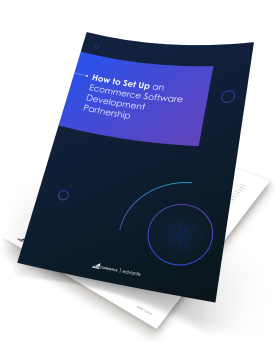Over a decade ago, one startup disrupted the entire US razor market. Dollar Shave Club founder promised to deliver razors right to customers’ doors for just $1 per blade. Men, frustrated over forgetting to order razors on time, rushed to get a subscription after seeing the brand’s viral YouTube video.
The market share for Gillette — an industry old-timer — dropped from 70% in 2010 to 54% in 2016 as Dollar Shave Club and soon-to-follow other subscription ecommerce brands took over.
Consumers discovered how convenient it is to get an auto-restock of their favorite products delivered straight to their door.
And the subscription business model soon became a popular business strategy among digital-born direct-to-consumer (DTC) brands and regular retailers.
2022 Ecommerce Subscription Market Overview
Subscriptions provide retailers with a convenient path to recurring revenue and customer loyalty. They enable direct customer relationships, leading to more significant business growth. As McKinsey points out, subscription businesses, primarily associated with ecommerce, expanded about six times faster than the S&P 500.
Although direct sales still prevail in ecommerce, subscriptions are increasingly gaining traction. As of February 2021, at least 19.7% of all consumers had an active retail subscription. For comparison, the number of retail subscribers was just 8.7% in February 2020.
Here’s how the subscription business model compares to direct sales:
What Types of Businesses Benefit the Most From Subscriptions
DTC brands control all aspects of the product lifecycle – from manufacturing to marketing and selling — and are the prime adopters of the ecommerce subscription model.
Without a physical retail footprint and wholesale network, DTC brands are more constrained in customer acquisition. They rely on owned channels (digital website and organic social media) and paid advertising to attract new buyers. Subscriptions, in turn, enable them to secure extra recurring revenue from a loyal customer base. So, it’s hardly surprising that 75% of DTC brands plan to offer subscriptions by 2023.
Apart from DTC brands, subscriptions are often used by:
- Pure-play subscription brands – companies whose business models rely on subscriptions. For example, FabFitFun offers a subscription to the box with multi-brand fashion, home, beauty, and wellness products. KiwiCo provides parents with subscription lines of brain-building toys and games for kids of different ages.
- Wholesalers and ecommerce marketplace – businesses that focus on one-time purchases implement subscriptions as part of business model diversification. For instance, See New is a wholesaler of multi-brand beauty products. In addition to direct investments, they also offer a subscription to beauty boxes with the brands they sell.
The success of DTC brands inspired more prominent brands to explore this operating model. In 2019, Nike introduced a subscription for kids’ shoes. Today, the brand offers Nike Membership.
Undoubtedly, the potential impact of adopting a subscription model is determined not only by your business type. Generally, you also need to consider:
- Products categories: Some products are re-purchased more often. According to the State of Subscription Commerce, Food & Beverages is the most popular category for a subscription, followed by Beauty & Personal Care and Health & Wellness.
- Target audience: Some categories of consumers are more willing to commit to a subscription than others. As per McKinsey research, the average subscriber will more likely be 25 to 44 years old, with an income between $50,000 and $100,000.
- Inventory management: The subscription business model requires additional stock planning. It’s essential you don’t understock at times of most active one-time purchases (e.g., Black Friday) so that your subscribers don’t suffer from delivery issues.
- Logistics capabilities: Most consumers (41.1%) opt for subscriptions to save time on in-person shopping. To satisfy this user’s need, you need to deliver on time. Hence, you need to align the logistics process between subscription and direct sales.
The above factors will also help you determine what kind of subscription your customers need – replenishment, curation, or membership. Here’s a comparison of them:
Types of Subscription Business Models
Source: McKinsey
The type of subscription you select should complement your go-to-market strategy and fit the needs of your target audience.
Separately, a subscription business model also requires a specific technology setup. You’ll need to integrate this sales channel with other supporting business systems such as CRM, 3PL, and payment processing. But most importantly, your ecommerce platform should allow you to implement and support retail subscriptions.
How Does BigCommerce Handle Subscriptions?
BigCommerce comes with a host of built-in subscription management tools. Integrating BigCommerce subscription apps with your store is simple and doesn’t require coding skills. These tools are already PCI-compliant and verified by BigCommerce.
BigCommerce customer support team can also help you fix bugs and address other operational issues when they arise.
Amongst the subscription management tools pre-integrated into BigCommerce are ReCharge Subscriptions, Subscrimia, Ordergroove, and many others.
However, you may already use other apps – like ProfitWell, Zuora, and Verifone – and want to have them integrated with your BigCommerce store. Or maybe you need a subscription flow explicitly tailored to your brand?
Out-of-the-box BigCommerce solutions may also not work for your brand if they:
- Don’t support your preferred payment methods
- Restrict sales flow customization
- Aren’t available in your market
- Lack analytics capabilities
- Hinder your customer experience
If so, you’d have to consider a custom integration. For that:
- Evaluate integration cost and timelines
- Select a subscription management tool or create a reference architecture for a custom subscription process flow
- Refer to a BigCommerce-certified technology partner to refine your ideas and start the integration work
Integrating and Customizing Third-Party Subscription Management Apps
BigCommerce allows you to add third-party subscription management tools or subscription models. You can customize checkout (e.g., utilizing Storefront Checkout API or developing headless checkout solutions). However, since this task requires manual coding, consider partnering with a BigCommerce-certified vendor like Edvantis.
Their custom work might include:
- Third-party integration of subscription management software
- Customization of pre-integrated subscription management tools
- Synchronizing your subscription management software with other business systems (3PL, ERP, CRM, etc.)
- Creating custom analytics models for your subscription management software
- Creating an entirely custom checkout experience with the customized subscription model.
While BigCommerce’s flexibility makes it possible to integrate third-party apps, it comes with specific challenges:
- Technical expertise: You’ll need a development team experienced with the BigCommerce platform, API integrations, Payments (PCI-compliance), and other technologies depending on your needs (e.g., Big Data, UI/UX design).
- Extra investments: Custom integration projects assume additional expenses for planning, development, design, testing, etc.
- Support: You’ll have to decide who will be responsible for the solution’s maintenance and ongoing troubleshooting.
- PCI-compliance: The responsibility for PCI-compliance will no longer be on the BigCommerce side since it is not their code.
- Engagement: Working with a vendor doesn’t mean you can delegate the integration task and then return for the results. You must participate in the development process by refining requirements and providing feedback.
The breakdown of responsibility in case of custom integration/customization of BigCommerce apps is as follows:
Working with a technology vendor won’t limit you to what BigCommerce has pre-integrated. You can implement a customized subscription architecture that fulfills all your business requirements.
Other benefits of working with a development partner include
- More freedom in terms of checkout design
- Subscriptions customized as per your customers’ needs
- Integration of third-party tools to subscription management app (e.g., for improved analytics, fraud detection, tax estimation, logistics, etc.)
- Synchronization of subscription functionality with your corporate apps (ERP, CRM, 3PL, etc.)
Conclusion
A subscription business model provides your business with a steady stream of revenue and improved customer loyalty. In return, you help your customers save time and enjoy convenient product deliveries. Subscriptions:
- Save efforts: Customers don’t manually order goods every month. Brands no longer need to win every single sale from every single customer.
- Provide flexibility: Customers can choose relevant delivery options and personalize the contents of their product boxes. Brands get time and space for logistics and inventory planning.
- Ensure cost-efficiency: Customers get discounts, perks, and benefits. Brands get guaranteed purchases.
To maximize subscription benefits, you need a robust technology foundation — provided by the BigCommerce platform and extended by your tech vendor.
As a result, you will have more time and space to focus on the business side of things. You will be more confident in curating relevant marketing campaigns and convincing more customers that your product plus subscription equals the best offer on the market.
Get in touch with Edvantis to further discuss your technology strategy for adopting a subscription business model.



